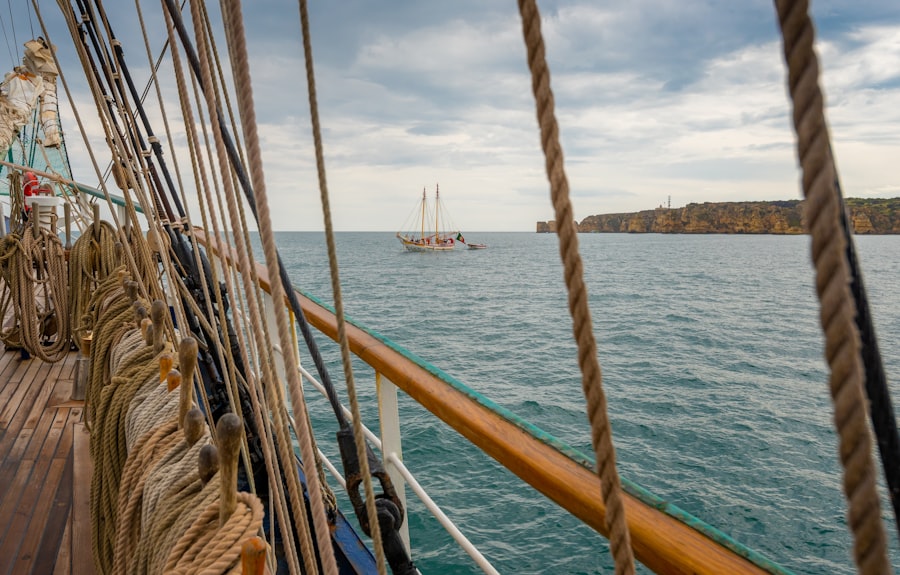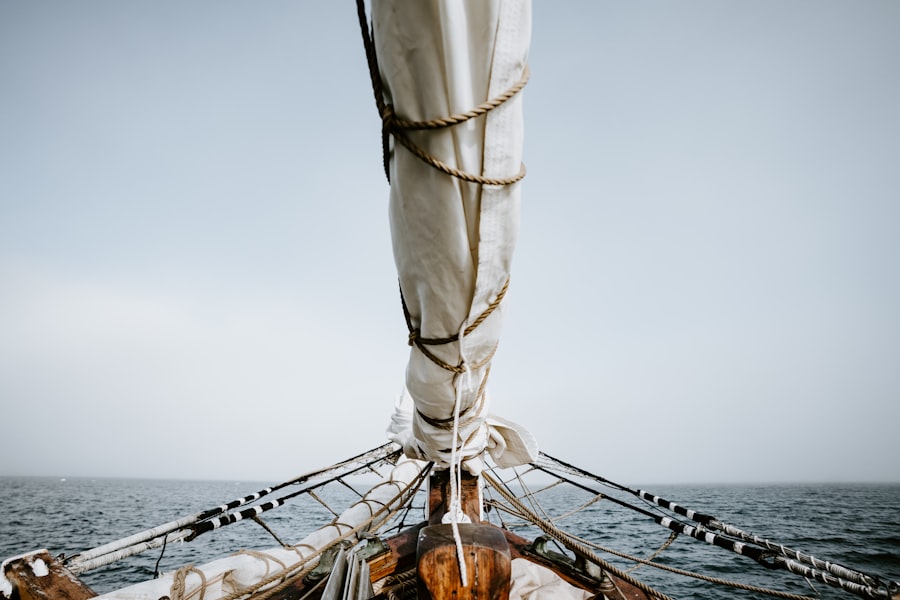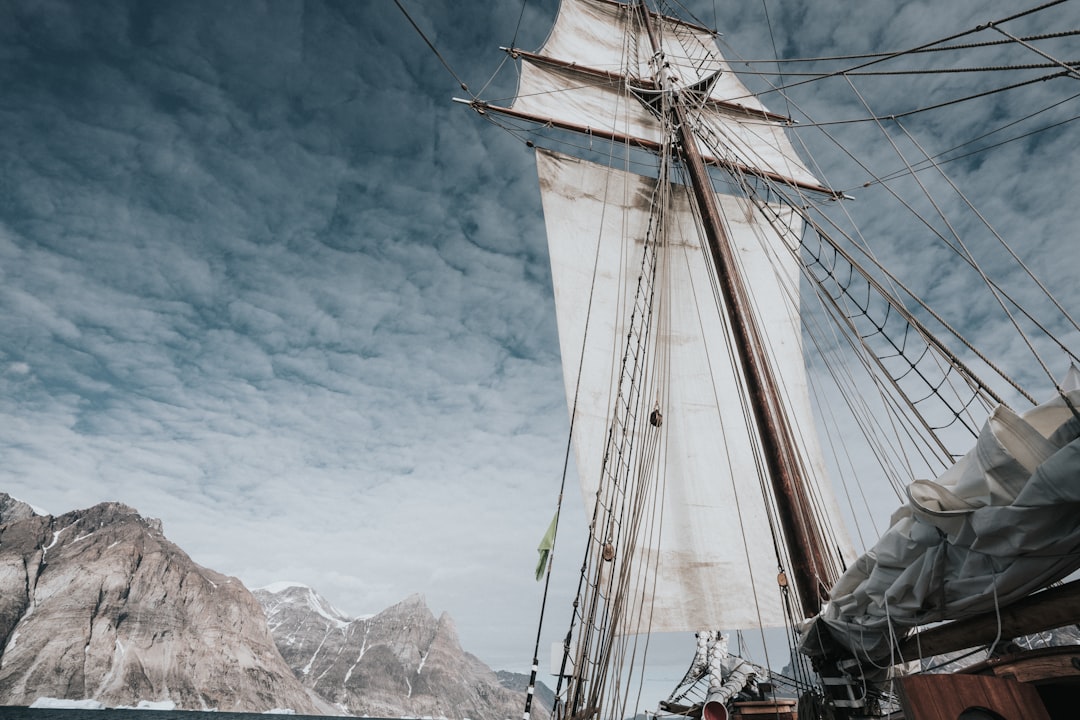The Drake Passage, a body of water that separates South America from Antarctica, is renowned for its tumultuous seas and unpredictable weather. Named after the English explorer Sir Francis Drake, who navigated these waters in the late 16th century, the passage has become a focal point for adventurers, researchers, and nature enthusiasts alike. Stretching approximately 600 miles, it serves as a critical route for vessels traveling between the Atlantic and Pacific Oceans.
The Drake Passage is not merely a geographical feature; it embodies the spirit of exploration and the challenges that come with venturing into some of the most remote regions of the planet.
The allure of its icy waters and the promise of breathtaking landscapes draw countless travelers each year.
However, this journey is not for the faint-hearted. The passage is notorious for its rough seas and rapidly changing weather conditions, which can turn a serene voyage into a harrowing experience in a matter of moments. Despite these challenges, the Drake Passage remains a symbol of adventure, beckoning those who dare to traverse its waters.
Key Takeaways
- The Drake Passage is a treacherous body of water located between South America’s Cape Horn and the South Shetland Islands of Antarctica.
- The geography and climate of the Drake Passage are characterized by strong winds, rough seas, and unpredictable weather patterns, making it one of the most challenging maritime routes in the world.
- The historical significance of the Drake Passage is marked by numerous expeditions and explorations, including those of famous explorers like Sir Francis Drake and Ernest Shackleton.
- Navigating the Drake Passage poses various challenges and dangers, including extreme weather conditions, icebergs, and the notorious “Drake Shake” experienced by sailors.
- When preparing for a journey through the Drake Passage, it is important to choose the right vessel, pack appropriate gear, and be mentally and physically prepared for the demanding conditions.
Understanding the geography and climate of the Drake Passage
The geography of the Drake Passage is characterized by its deep waters and strong currents, which are influenced by the confluence of the Atlantic, Pacific, and Southern Oceans. This unique positioning creates a dynamic marine environment that is both rich in biodiversity and challenging for navigation. The passage is flanked by the rugged coastlines of Cape Horn to the north and the Antarctic Peninsula to the south, creating a funnel effect that intensifies wind and wave action.
This geographical configuration contributes to the passage’s reputation as one of the most treacherous maritime routes in the world. The climate in the Drake Passage is equally formidable. It is marked by extreme variability, with conditions that can shift from calm to stormy within hours.
The region experiences strong winds, often exceeding 50 knots, and waves that can reach heights of over 30 feet. These factors make sailing through the Drake Passage a test of skill and endurance for even the most experienced mariners. The cold temperatures, combined with frequent precipitation and fog, add another layer of complexity to navigating this challenging waterway.
Understanding these geographical and climatic factors is essential for anyone planning a journey through the Drake Passage.
Historical significance of the Drake Passage

The historical significance of the Drake Passage cannot be overstated. It has long been a critical route for explorers and traders seeking to connect the Atlantic and Pacific Oceans. Sir Francis Drake’s expedition in 1578 marked one of the first recorded passages through these waters, paving the way for future explorations.
His journey not only demonstrated the potential for maritime trade routes but also highlighted the challenges posed by the passage’s treacherous conditions. Over the centuries, many explorers have followed in his wake, each contributing to our understanding of this formidable stretch of ocean. In addition to its role in exploration, the Drake Passage has also been pivotal in scientific research.
The waters are home to diverse marine life and play a crucial role in global ocean currents and climate patterns. Researchers have conducted numerous studies in this region, examining everything from oceanography to marine biology. The passage’s historical significance extends beyond exploration; it has become a vital area for understanding Earth’s environmental systems and their interconnectedness.
Challenges and dangers of navigating the Drake Passage
| Challenges and Dangers of Navigating the Drake Passage |
|---|
| Rough seas and strong winds |
| Potential for icebergs and ice floes |
| Narrow passage with limited maneuvering room |
| Unpredictable weather conditions |
| Remote location with limited access to assistance |
| Historical reputation as one of the most treacherous sea routes |
Navigating the Drake Passage presents numerous challenges and dangers that can test even the most seasoned sailors. The unpredictable weather patterns are perhaps the most daunting aspect, as storms can arise suddenly, creating hazardous conditions that can lead to capsizing or collisions. The strong currents and shifting tides further complicate navigation, requiring constant vigilance and skill from those at the helm.
Additionally, icebergs and floating debris pose significant risks, particularly during certain times of the year when ice melt increases. The psychological challenges of traversing the Drake Passage should not be underestimated either. The isolation and vastness of the ocean can evoke feelings of vulnerability among crew members and passengers alike.
Many travelers experience anxiety about potential emergencies or adverse weather conditions, which can detract from their overall experience. Understanding these challenges is crucial for anyone considering a journey through this formidable passage, as preparation and awareness can make all the difference in ensuring a safe voyage.
Tips for preparing for a journey through the Drake Passage
Preparation is key when embarking on a journey through the Drake Passage. First and foremost, travelers should conduct thorough research on their chosen route and vessel. Understanding the specific challenges associated with navigating these waters will help set realistic expectations for what lies ahead.
Additionally, travelers should familiarize themselves with safety protocols and emergency procedures specific to their vessel. Packing appropriately is another essential aspect of preparation. Given the unpredictable weather conditions, layering clothing is advisable to ensure comfort throughout varying temperatures.
Waterproof gear, sturdy footwear, and warm accessories such as hats and gloves are also recommended to protect against cold winds and rain. Furthermore, travelers should consider bringing seasickness remedies or medications, as motion sickness can be a common issue in these turbulent waters.
Choosing the right vessel for navigating the Drake Passage

Selecting an appropriate vessel for navigating the Drake Passage is crucial for ensuring safety and comfort during the journey. Various types of vessels are available, ranging from large cruise ships to smaller expedition boats. Larger vessels often provide more stability in rough seas due to their size and weight; however, they may lack access to some of the more remote areas along the Antarctic coastline.
On the other hand, smaller expedition vessels offer greater maneuverability and can navigate tighter spaces but may be more susceptible to rough conditions. Travelers should consider their personal preferences regarding comfort levels, amenities, and group sizes when choosing a vessel. Consulting with experienced tour operators or maritime experts can provide valuable insights into which type of vessel would best suit their needs for navigating this challenging passage.
Safety measures and precautions for navigating the Drake Passage
Safety should always be a top priority when navigating the Drake Passage. Mariners must ensure that their vessels are equipped with essential safety equipment such as life jackets, flares, first aid kits, and communication devices capable of functioning in remote areas. Regular safety drills should be conducted to familiarize crew members with emergency procedures and protocols.
In addition to equipment checks, maintaining constant communication with other vessels in the area is vital for ensuring safety during navigation. Weather updates should be monitored closely to anticipate any changes that could impact sailing conditions. Furthermore, having contingency plans in place for emergencies—such as medical issues or equipment failures—can significantly enhance safety during a journey through these treacherous waters.
Wildlife and natural beauty of the Drake Passage
Despite its challenges, the Drake Passage is also celebrated for its stunning natural beauty and rich biodiversity. The waters teem with marine life, including whales, seals, and various species of fish that thrive in this nutrient-rich environment. Travelers often have opportunities to spot majestic humpback whales breaching or playful sea lions basking on ice floes during their journey.
The surrounding landscapes are equally breathtaking, with dramatic cliffs and icebergs sculpted by nature’s forces over millennia. The stark contrast between icy blue waters and white glaciers creates a mesmerizing visual experience that captivates all who venture through this region. For nature enthusiasts and wildlife lovers alike, navigating the Drake Passage offers an unparalleled opportunity to witness some of Earth’s most awe-inspiring sights.
Strategies for coping with seasickness in the Drake Passage
Seasickness is a common concern for many travelers embarking on a journey through the Drake Passage due to its notorious rough seas. To mitigate this discomfort, several strategies can be employed before and during travel. One effective approach is to choose accommodations on lower decks where motion is less pronounced compared to higher levels of a vessel.
Additionally, travelers may benefit from taking seasickness medications prior to departure or using natural remedies such as ginger or acupressure bands designed to alleviate nausea symptoms. Staying hydrated and consuming light meals can also help reduce feelings of queasiness while at sea. Engaging in activities such as focusing on distant horizons or spending time on deck can provide distraction from discomfort during turbulent moments.
Famous expeditions and explorations through the Drake Passage
Throughout history, numerous famous expeditions have traversed the Drake Passage, each contributing to our understanding of this remarkable region. One notable expedition was led by Ernest Shackleton in 1914 when he sought to cross Antarctica via this perilous route aboard his ship Endurance. Although his journey was ultimately thwarted by ice entrapment, Shackleton’s incredible leadership during adversity has become legendary.
Another significant exploration was conducted by Robert Falcon Scott during his ill-fated Terra Nova Expedition in 1910-1913. Scott’s team faced immense challenges while navigating through these treacherous waters en route to Antarctica’s South Pole. Their story serves as a poignant reminder of both human ambition and vulnerability in confronting nature’s extremes.
The allure and adventure of navigating the Drake Passage
In conclusion, navigating the Drake Passage represents an extraordinary adventure filled with both challenges and rewards. Its historical significance as a route for exploration underscores humanity’s enduring quest for discovery amidst nature’s formidable forces. While preparing for such a journey requires careful consideration of safety measures, vessel selection, and coping strategies for seasickness, it ultimately offers travelers an unparalleled opportunity to witness breathtaking landscapes and diverse wildlife.
The allure of this passage lies not only in its natural beauty but also in its rich history steeped in exploration tales that continue to inspire adventurers today. For those willing to embrace its challenges head-on, traversing the Drake Passage promises an unforgettable experience that captures both the spirit of adventure and respect for nature’s power.
Sailing the Drake Passage is an adventure that challenges even the most seasoned sailors, offering a thrilling experience through one of the most treacherous stretches of water in the world.
